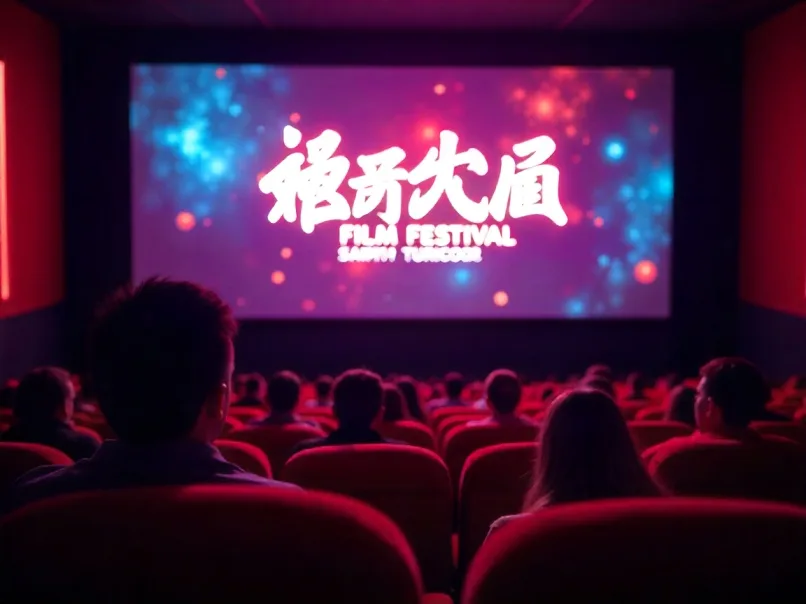Published on
August 17, 2025

The 2025 Sziget Festival took place on Budapest’s Óbuda Island—the same place festival-goers know as Hajógyári Island. The festival gates swung open on Wednesday, August 6. That same night, Charli XCX took the mainstage spotlight, drawing a crowd that nearly packed the whole area. The next evening, Shawn Mendes stepped up as the main headliner, and once again, the audience was almost at total capacity.
The festival’s weeklong run brought an enviably diverse slate of acts from around the globe. Nelly Furtado, Post Malone, Kid Cudi, Papa Roach, and Empire of the Sun all stepped on stage, covering a sweep of styles and eras. Under a glowing closing night, Chappell Roan delivered the fest’s last set, an anthem of drag-pop joy that lingered in the air as the final exit lights blinked on. Fans filed out, still buzzing from Roan’s soaring vocals and electric energy, the week’s last memory unmistakably a high note.
Later, festival planners shared the first survey results from festival-goers. This year’s crowd had a younger average age than in 2024, and the organisers saw this as a good sign. Engaging younger people means the festival is already winning over the next generation. For Budapest’s cultural tourism, having a youthful audience at one of Europe’s biggest cultural events is not just good news today; it means the city’s cultural life will keep thriving for years to come.
Southern Óbuda Island to undergo large-scale transformation
Parallel to the celebration of music and culture, a major development announcement was made during the festival. Plans were unveiled for the southern portion of Óbuda Island, which had long been left unused and where many structures had fallen into disrepair. According to reports shared at the press event, the southern side of the island was set to be converted into a large-scale cultural and recreational centre, with the first attractions scheduled to open by the end of 2025.
The project was presented as a cooperative initiative between the developer MultiKulti Zrt. and the city administration. Early outlines showed that the redevelopment would not only target entertainment but would also focus on community and tourism.
New attractions: sports fields, cultural venues, and heritage spaces
The concept of the redevelopment was designed to include several distinct features. Open-air sports grounds covering approximately 10,000 square metres were proposed for children and youth. In addition, two multifunctional indoor halls totalling about 5,000 square metres were scheduled for construction, with a timeline of six to ten months for opening. A dog beach was also part of the plan, underlining the project’s family-friendly orientation.
Another central element was the restoration of a 19th-century industrial building. Once part of a machine shop dating back to the 1870s, its external walls were planned for preservation, while its interior would be modernised with contemporary infrastructure. By combining industrial heritage with modern cultural use, the site was expected to serve both as a symbol of Budapest’s history and as a functional new attraction.
Plans also included a Light Museum, scheduled to open in December, which was intended to coincide with the Advent market in the city’s 3rd district. This museum was expected to become a year-round cultural draw for both tourists and locals.
Community benefits and public access improvements
Officials emphasised that the redevelopment was not limited to festival infrastructure but was designed with residents in mind. The island was envisioned as a leisure destination for locals, and green space preservation was guaranteed within the planning framework. By strengthening the connection between the northern and southern parts of Óbuda Island, easier access was expected for the public.
Alongside cultural and sports elements, economic and social benefits were also highlighted. Around 300 new jobs were projected to be created by the redevelopment, and opportunities for small businesses were expected to follow once the facilities became operational.
Future integration with Sziget Festival
Organisers of the Sziget Festival confirmed that collaboration with the developers would be considered once progress on the project was evident. If the southern island’s transformation produced usable cultural and event spaces, parts of it might be integrated into the 2026 edition of the festival.
For festivalgoers, this potential expansion could mean a larger footprint, diversified stages, and improved experiences. For the city, it would allow the iconic event to be directly linked with the long-term cultural infrastructure of Budapest.
Infrastructure and municipal challenges
Despite the ambitious plans, certain infrastructure questions remained unresolved. The K Bridge, which provides access to Óbuda Island and serves as the main entry point for festival attendees, was identified as being in need of renovation. Responsibility for this fell under the Budapest Municipal Government, which confirmed that renovation plans were under review but that funding would need to be finalised.
The broader redevelopment plan also required significant utility assessments. Electricity, water, and transportation upgrades would have to be included before full cost figures could be confirmed. These calculations were expected to be completed within six months.
A broader cultural and tourism strategy
The Óbuda Island cultural centre project was aligned with Budapest’s long-term tourism and cultural strategies. Government reports had already emphasised the need for expanding cultural spaces, supporting music and performance arts, and improving recreational infrastructure for both visitors and residents.
When completed, the development was expected to strengthen Budapest’s image not only as a festival capital of Central Europe but also as a city of year-round cultural experiences.
Travel implications for visitors
For travellers, linking the Sziget Festival with the updated Óbuda Island opens a thrilling cultural itinerary. In 2026, festivalgoers will step off the dance floor and into fresher concert sights, surrounded by better amenities. Those visiting the island at other times will find museums, historic spots, and brand-new parks and waterfronts, all ready to blend art, history, and leisure.
Budapest already shines with its UNESCO World Heritage sites, famous thermal baths, and lively nightlife, and now the new Óbuda Island project is set to push its appeal even further. The plan to turn the island into a lively cultural district is expected to put the city firmly on the must-visit list for travellers across Europe.
[Image Source: Sziget Festival Official Website]







